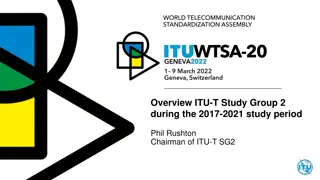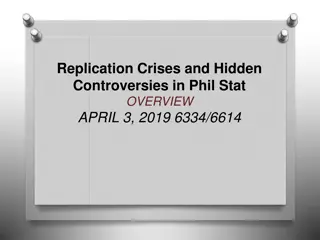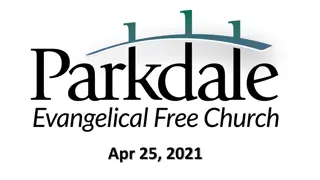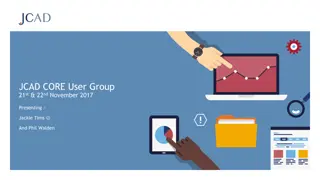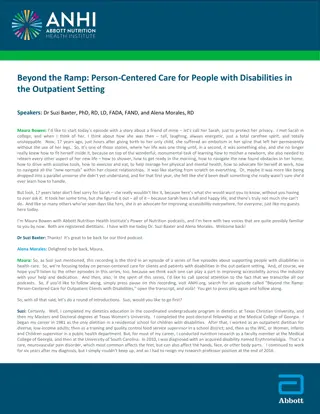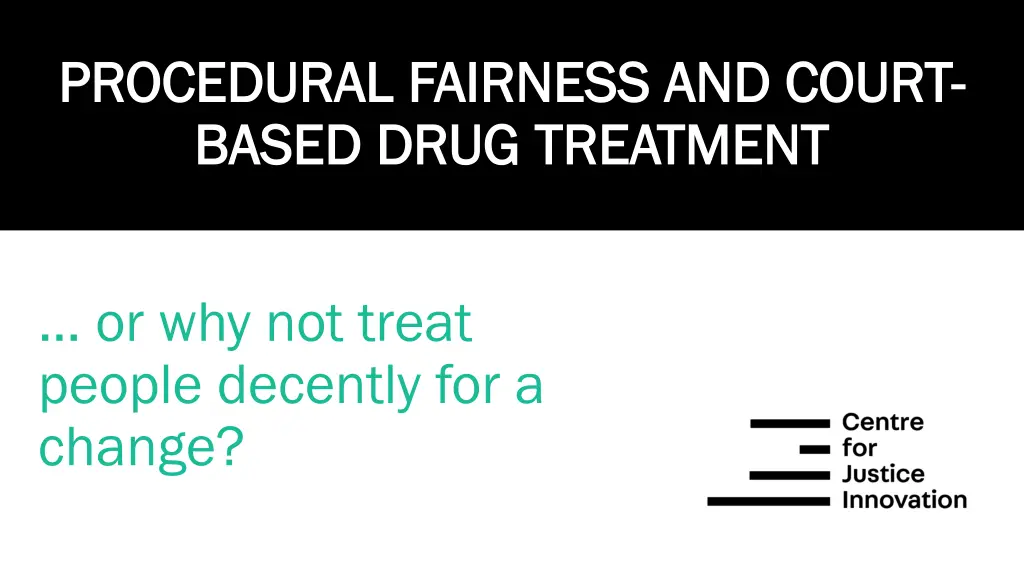
Innovative Approaches to Drug Treatment in Court Settings
Explore the effectiveness of problem-solving court models for drug treatment, including tailored interventions, judicial supervision, and evidence-based results. Learn how these approaches reduce reoffending and drug use while promoting positive outcomes for individuals involved in the criminal justice system.
Download Presentation

Please find below an Image/Link to download the presentation.
The content on the website is provided AS IS for your information and personal use only. It may not be sold, licensed, or shared on other websites without obtaining consent from the author. If you encounter any issues during the download, it is possible that the publisher has removed the file from their server.
You are allowed to download the files provided on this website for personal or commercial use, subject to the condition that they are used lawfully. All files are the property of their respective owners.
The content on the website is provided AS IS for your information and personal use only. It may not be sold, licensed, or shared on other websites without obtaining consent from the author.
E N D
Presentation Transcript
PROCEDURAL FAIRNESS AND COURT PROCEDURAL FAIRNESS AND COURT- - BASED DRUG TREATMENT BASED DRUG TREATMENT or why not treat people decently for a change?
Drug treatment in court settings Drug treatment in court settings Often, the best response to substance misuse is to intervene early and avoid cases escalating. However, recognising some people will come to court, we have been involved in the creation, support and sharing of good practice of a number of court- based problem-solving treatment models across the UK. Most notably, we: Provide support to a number of criminal courts who are trialing problem-solving court models whereby a specialist MDT works with a dedicated judge to supervise individuals on community sentences (often individuals who would have otherwise faced custodial sentences), including working with Government on new pilots in England and Wales, due to commence in Spring 2022; We are the national provider of training, support and practice sharing to the growing number of problem-solving Family Drug and Alcohol Courts (FDACs), whereby a specialist MDT works with a dedicated judge to give parents who are at risk of having their children removed with a trial for change during their care proceedings.
Drug treatment in problem Drug treatment in problem- -solving court settings solving court settings Person centred interventions, support and supervision Specialist MDT Regular judicial monitoring , with person appearing in front of same judge to discuss progress etc Specially trained judge In criminal courts, this can involve incentives and sanctions, such as relaxing testing conditions or short periods of punishment
The evidence base on problem The evidence base on problem- -solving court models for drug treatment solving court models for drug treatment International evidence suggests adult criminal drug courts are effective at reducing reoffending and drug use. International meta-analyses demonstrate that drug courts consistently show better re- arrest or reoffending rates compared to randomized or matched comparison samples of drug offenders who were on other forms of probation or who had had their cases heard in traditional courts. These studies also show a marked decrease in drug use, as well as improvements in other outcomes, such as levels of alcohol mis-use. Evidence suggests that nearly all categories of individuals benefit comparably from the drug court intervention: (i) those reporting more frequent drug use at baseline showed a particularly large reduction in drug use at the 18-month follow-up; (ii) individuals with violent histories showed a greater reduction in crime than others at follow-up.
The evidence base on problem The evidence base on problem- -solving court models for drug treatment solving court models for drug treatment Research suggests that, compared to the outcomes of standard care proceedings for similar types of case, FDACs: significantly increase safe, stable family reunification and parental substance misuse cessation, decrease the likelihood of future child neglect and abuse, decrease recurrent care proceedings. looking at a five year follow-up period after proceedings end strongly suggests that FDACs positive outcomes are durable over time. The What Works Centre for Children s Social Care Evidence Store reports that FDTCS/FDAC has a positive effect on reunification, based on high strength evidence. A 2019 meta analysis looking at 17 studies of Family Treatment Courts showed that the model demonstrates strong evidence for reunification at the end of proceedings. FTDC participants are roughly twice as likely to be reunited.
But why do these models work? But why do these models work? Drug treatment problem-solving courts have a strong evidence base, strongly suggesting they are effective at improving individuals well being, helping people reduce their dependency and helping them to avoid the most unpleasant consequences the justice system can mete out. But why do these models work? alongside the more obvious advantages of connecting individuals with high-quality treatment and whole person services.
The evidence for procedural fairness The evidence for procedural fairness A major US study in the early 2010s explored how drug courts work and for whom by isolating key individual and program factors that make drug courts more or less effective in achieving their desired outcomes. By using a regression model, it looked to isolate those practices which particularly drove the better outcomes ascribed to drug courts. It looked at nearly 1,800 drug court and non-drug-court probationers from 29 rural, suburban and urban jurisdictions across the United States. The sample included 23 drug courts and six comparison groups in eight states.
The evidence for procedural fairness The evidence for procedural fairness The primary mechanism by which drug courts reduce substance use and crime is through the judge. Drug court offenders believe that their judge treated them more fairly than the comparison group, including demonstrating greater respect interest interest in them as individuals in them as individuals and greater opportunities to express their greater opportunities to express their own voice own voice during the proceedings. greater respect and Furthermore, when offenders have more positive attitudes toward offenders have more positive attitudes toward the judge judge, they have better outcomes , they have better outcomes. the
The evidence for procedural fairness The evidence for procedural fairness A separate analysis drawing upon the results of structured courtroom observations found, similarly, that drug courts whose judge was rated by members of the research team as exhibiting a more demeanor demeanor more positive judicial positive judicial (e.g., respectful respectful, fair fair, attentive attentive, enthusiastic and knowledgeable and knowledgeable) enthusiastic, consistent/predictable consistent/predictable, caring, caring, produced produced better outcomes than better outcomes than other drug courts other drug courts.
The evidence for procedural fairness The evidence for procedural fairness An FDAC study found clear evidence that parents found the FDAC process supportive, with a high number of parents identifying the role of the judge as a key factor in motivating them to change. FDAC has been of enormous benefit to us. I have been freed from addiction, and my child has gained a father. A number of parents particularly singled out the judge s role in FDAC: At first I didn t like him because he was honest. He was saying it how it was and it was bad. But now I know it was the truth. No-one ever praised me before. Some parents contrasted their experience in FDAC with previous experience of care proceedings: I ve been through an ordinary care case before normally you wouldn t get any advice no-one actually works with you. All that the social workers said was go to rehab .
The evidence for procedural fairness The evidence for procedural fairness Our new value for money analysis suggests that FDAC is a significantly less expensive way of hearing care proceedings than the standard approach. Care proceedings that go through FDAC rarely end in a contested hearing, when around 50% of standard proceedings do. By avoiding lengthy legal disputes, FDAC saves local authorities and the Legal Aid Agency 25,300 per case in the legal costs of care proceedings, and most of these savings are cashable. But why? We believe it is likely that FDAC makes these savings because FDAC is fairer way of hearing fairer way of hearing cases cases. Qualitative evidence has previously shown that FDAC delivers a more procedural fair way of hearing care cases. Our analysis strongly suggests that this procedural fairness has a financial payoff procedural fairness has a financial payoff by avoiding expensive legal costs, such as contested hearings. FDAC is a a
Procedural fairness good practice Procedural fairness good practice Researchers have identified four elements that seem to drive citizens perceptions of fairness: Neutrality Neutrality do citizens perceive that decisions are made in an unbiased and trustworthy manner? Respect Respect does the citizen feel that he was treated with dignity and respect? Understanding Understanding do citizens understand how decisions are made and what is expected of them? Voice Voice has the citizen had an opportunity to be heard?
Procedural fairness good practice Procedural fairness good practice Fair and respectful handling of people, treating them with dignity, and listening to what they have to say, all emerge as significant predictors of legitimacy, and thus preparedness to cooperate with legal authorities and comply with the law. In other words, procedural fairness may not only be valued in its own right, procedural fairness may not only be valued in its own right, but it may actually be a precondition for an effective justice system but it may actually be a precondition for an effective justice system. Hough et al, Attitudes to Sentencing and Trust in Justice: Exploring Trends from the Crime Survey for England and Wales , Ministry of Justice, 2013
Procedural fairness good practice Procedural fairness good practice Research in drug courts has indicated that there are standardised practices which drive these perceptions within the judge to individual relationship: continuity of continuity of the judge for the whole period of the court order); the judge (where practicable, the same judge supervising the offender the frequency of the frequency of the relationship relationship (regular reviews that are predictably scheduled); the individualisation individualisation of needs and situations of each participant from hearing to hearing); of that relationship that relationship (e.g. the judge remembers the specific voice voice (the opportunity for participants to voice their side of the story); the importance of clear jargon). clear communication communication (both oral and written, avoiding legal
Procedural fairness good practice Procedural fairness good practice Importantly not any old review hearing will do how the monitoring is done, how it adopts procedurally fair practice seems to be the animating ingredient. Significantly better outcomes were achieved by participants who rated the judge as being knowledgeable about knowledgeable about their cases their cases and who reported that the judge knew them by name, encouraged encouraged them to succeed importance of drug and alcohol treatment, was not intimidating or unapproachable unapproachable, gave them a chance to tell chance to tell their side treated them fairly and with respect them to succeed, emphasized the not intimidating or their side of the story of the story, and with respect.
Procedural fairness good practice Procedural fairness good practice In a recent briefing, we interviewed a number of practitioners involved in problem- solving and asked them to highlight the key effective practice points: Practitioners repeatedly highlighted the importance of judicial monitoring judges monitor the progress of those who have offended. importance of judicial monitoring, where The sites stressed the importance of the consistency of the same judge appearing at consistency of the same judge appearing at each review hearing each review hearing, to ensure there is continuity and consistency of approach. In addition to consistency, practitioners in the four sites also highlighted the importance of the skills of the judges to offer regular feedback directly to individuals skills of the judges to offer regular feedback directly to individuals, to motivate and inspire them to do better than they thought they were capable of. Number of the practitioners we spoke with emphasised the value of holding graduations to acknowledge the participants progress and achievements graduations to acknowledge the participants progress and achievements. holding
Conclusion Conclusion Treating people with humanity and decency is the right thing to do. But, happily, the evidence shows that it also keeps communities safer, helps people move on with their lives, keeps families together and saves us money. Procedural fairness is a teachable set of skills: its use in court-based drug treatment models has been replicated international and in the UK. 32
www.justiceinnovation.org info@justiceinnovation.org @cjinnovation Putting practitioners and evidence at the heart of justice reform





